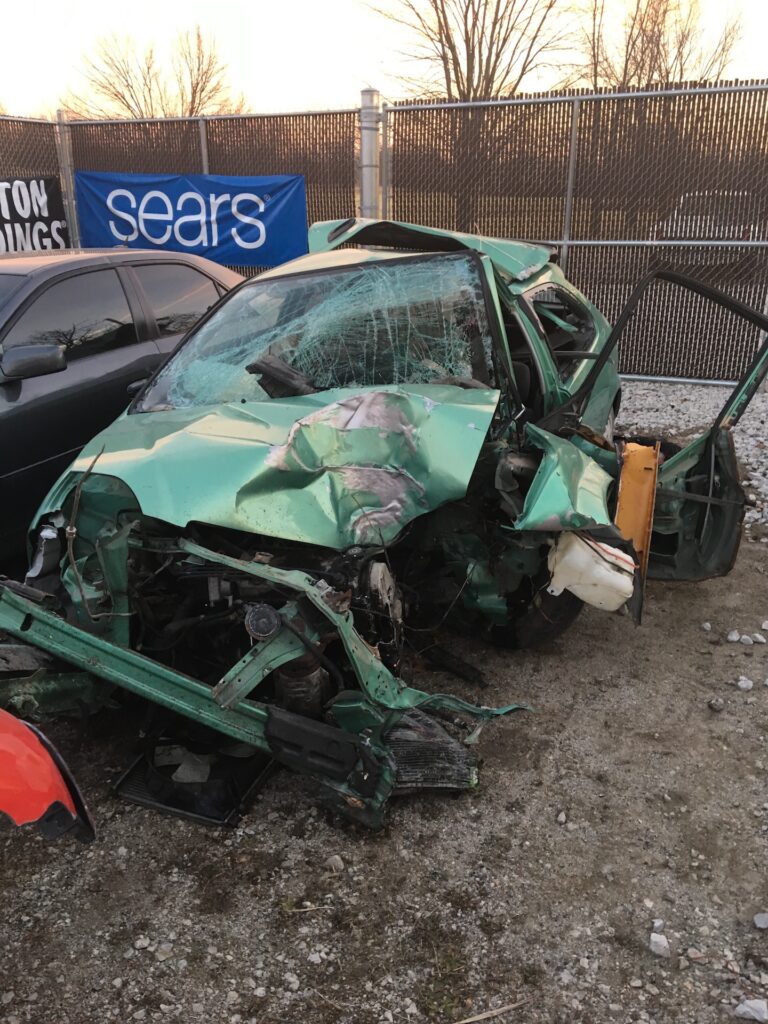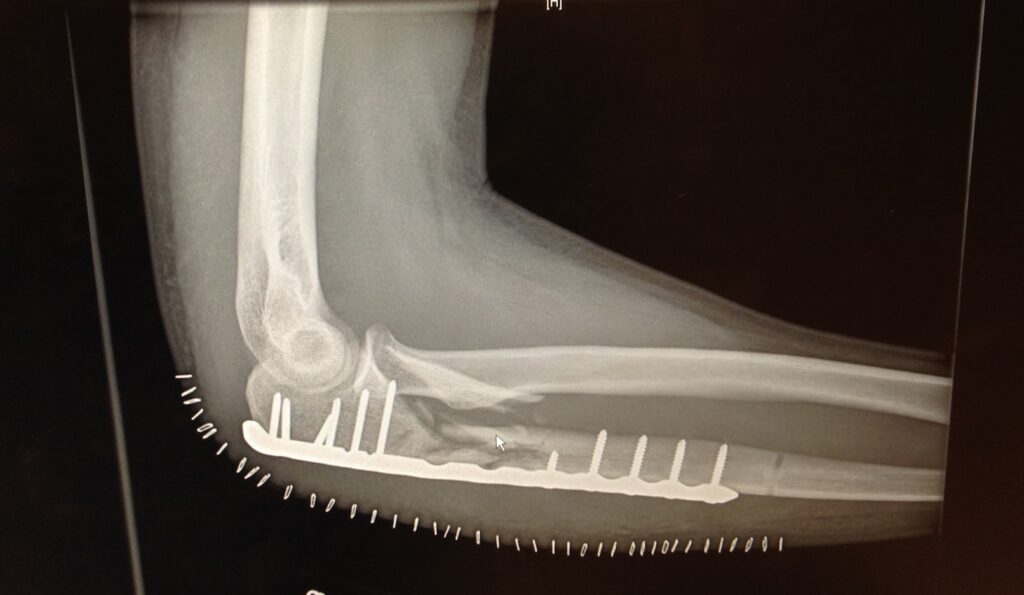Buckle Up: National Teen Driver Safety Week
Note: I first posted this essay in October 2017, eight months after my kiddo’s accident.
Just after midnight on February 4, a Saturday, my husband’s phone rang. At first, he ignored it because he didn’t recognize the number. But then the caller tried again and again. On the third time, he picked up, and we stepped into that nightmare that every parent fears: Your teenager has been in a car accident. He’s being transported to Kansas University Hospital in Kansas City.
The details of that night are fuzzy, but moments stand out with stark clarity. During the 40-minute drive to the hospital, my husband called dispatch back to get more details. Jake was alert, they said. He’d fallen asleep and wrecked his car. Alcohol and drugs were not a factor. I called the hospital. Would they bring him to the ER? Is that where we should go? The ambulance hadn’t arrived yet, but the hospital would call me back as soon as it did. Somewhere between home and Kansas City, John told me Jake had hit a tree. Until that point, I guess I thought he’d driven off the road into a field or something. Maybe rolled the car. But those words, “hit a tree,” gut punched me.
At the ER, they wouldn’t let us see him immediately. He was undergoing tests—MRIs and X-rays and who knows what. The woman at the reception desk called back to let medical staff know that “the trauma patient’s parents are here.” “Trauma patient”—another punch to the gut. She hastened to assure me that the words meant nothing, just a name for the unit tending to him. But I work with words. Words have meaning. “Trauma” is not a word you want to hear used to describe your loved one.
When they did let us see him, he was in a neck brace (as a precaution—further tests revealed no spinal damage), his arms and legs bleeding from numerous cuts and abrasions, only one deep enough to require stitches. The accident had shattered the ulna in his left arm. Within about a two-inch span near his elbow, it had broken into nearly a dozen pieces. He was damned lucky.
Another moment that stands out from that night still brings tears to my eyes. One of the first things Jake said to us about the accident was, “Thank god it was only a tree.” That he’d hit a tree multiplied the horror for me, but for my child, who lay broken and in pain, it was something to be grateful for. He hadn’t hit another car. No one else had been hurt in the wreck.
When I think about that night now, I relive the fear and horror, now tempered with profound gratitude:
— For the seatbelt and airbags that saved my boy’s life
— For the engineers who designed a car to absorb and distribute the shock of violent crash
— For the Good Samaritans who watched over and comforted my child when I couldn’t (I didn’t get their names, but I am deeply indebted to the individuals who stopped to help Jake in the aftermath of the crash, one of whom sacrificed his own sweatshirt to wrap Jake’s feet, bare because he lost his shoes in the crash)
— For the doctors and nurses at KU Hospital who put him back together, especially Dr. Brubacher, an elbow specialist who just happened to be on call
— For the physical therapist who helped him regain full range of motion in his elbow
— For the miracle of a human body that can regrow and repair crushed bone. For months after the accident, the possibility of a bone graft to fix the shattered ulna was ever present. Then at five months, the x-rays showed the bones starting to repair themselves. At seven months, the surgeon declared his arm healed.
To say that he almost died would be overly dramatic, but he could have. Within a couple months of his accident, I read of two others in our area who died when they lost control of their cars and hit trees.
If there was one thing we consistently did right as parents it was to insist that the boyo always wear a seatbelt. When he was old enough to buckle himself in, we had a ritual. Before we started the car, one of us would ask, “Are you buckled and pulled tight?” Every time. As he grew older, he’d cut us off before we asked with a sarcastic “Yes, I am buckled, and I am pulled tight.” By the time he took the wheel himself, a buckled seatbelt was so routine he didn’t even think about it. He just did it.
This week is National Teen Driver Safety Week. My message for this and every week is buckle up. Hug your kids. Tell ’em you love ’em. Insist that they wear seatbelts.
Every time.

September 2022


